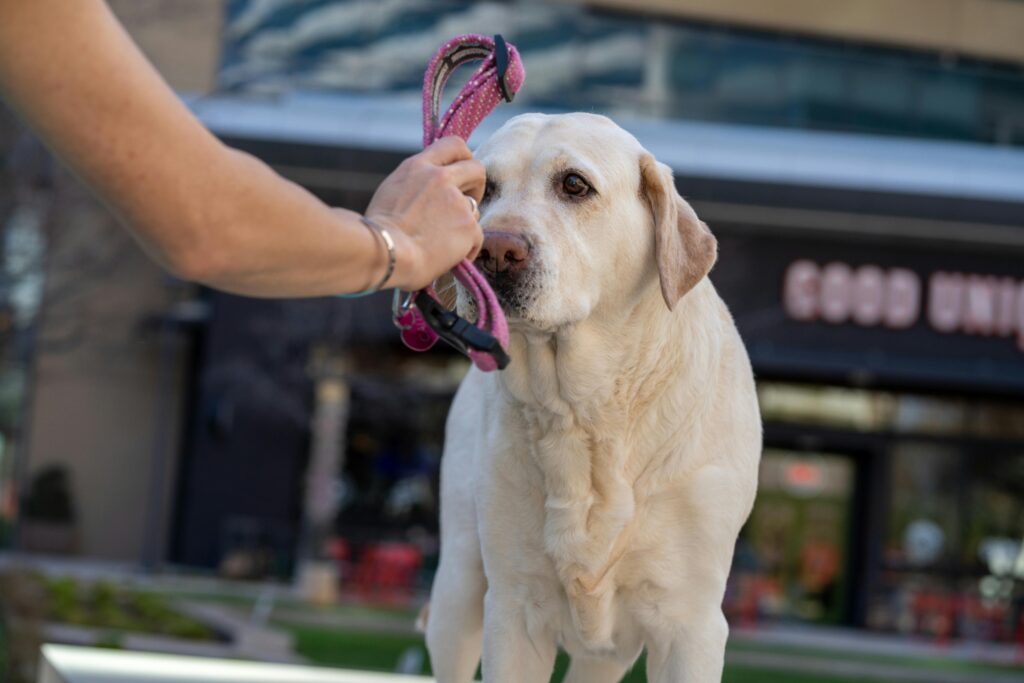Every August, families across New Jersey start shifting gears. Backpacks come out of storage, alarms are set earlier, and routines tighten up as kids return to school. But there’s one family member who often gets overlooked during this transition: your dog.
Whether your pup is used to all-day attention during summer break or thrives on a consistent presence at home, sudden back-to-school changes can trigger confusion, anxiety, and unwanted behavior. As professional dog trainers, we’ve helped many families prepare their dogs for this exact shift. The good news is, with the right approach, you can make the transition smooth for everyone.

Why the Back-to-School Shift Affects Dogs
Dogs are creatures of habit. When summer schedules are filled with playtime, backyard fun, and constant human interaction, your dog learns to expect that routine. When the kids suddenly disappear for 6 to 8 hours a day, it can lead to:
- Separation anxiety
- Excessive barking or whining
- Chewing or destructive behavior
- Regression in obedience
- General confusion or lethargy
The good news is, you can set your dog up for success by gradually preparing them in advance.
Start Adjusting the Schedule Early
Don’t wait until the first day of school to shift routines. Ideally, start making gradual changes 1 to 2 weeks in advance.
Here’s how:
- Move meals and walks to mirror the school-year schedule
- Create quiet time during the day to simulate when the house will be empty
- Encourage solo play or crate time during hours the family will be gone
- Practice leaving the house for short intervals so your dog learns you always return
Dogs thrive on predictability. A structured routine will reduce anxiety and improve their ability to adjust.
Enrichment Ideas for When Kids Are at School
Boredom is often the biggest trigger for unwanted behavior. If your dog is used to playing with the kids or constantly being engaged, enrichment is essential during school hours.
Try rotating these activities throughout the week:
- Frozen Kongs stuffed with kibble, peanut butter (xylitol-free), or yogurt
- Snuffle mats to encourage foraging behavior
- Interactive puzzle toys that challenge their brain
- Lick mats for calming stimulation
- Window perches or safe backyard access for visual entertainment
If you’re dealing with limited outdoor time due to hot weather, check out our guide on how to keep your dog active when it’s too hot outside.
Revisit Obedience Basics
When life gets busy, training tends to slip to the back burner. But this is the time your dog needs it most. Reinforcing basic commands helps your dog feel confident and in control, especially when the environment becomes more unpredictable.
Focus on:
- Place to help settle your dog during busy mornings and after-school chaos
- Down-stay to encourage patience and calm around distractions
- Recall to ensure safety in the yard when kids are coming and going
Our Basic Obedience Program includes these foundational commands and more. It’s designed to help your dog stay mentally balanced during life transitions like the back-to-school season.
Give Your Dog a Job During Transitions
Dogs love to work. Creating a sense of purpose during transitions can redirect energy and reduce stress.
Simple ways to give your dog a “job”:
- Ask for a command before opening the door (sit or wait)
- Use mealtime as a training opportunity with basic obedience
- Assign your dog to “place” while kids pack lunches or get ready for school
- Give them a chew or puzzle toy while everyone is heading out the door
This structure can ease the chaos of mornings and help your dog stay calm instead of overly stimulated.
Avoid Common Mistakes
Back-to-school transitions are often handled reactively instead of proactively. Here are a few mistakes to avoid:
- Letting your dog follow the kids out the door, which creates frustration when they are left behind
- Making goodbyes overly dramatic or emotional, which can trigger separation anxiety
- Skipping walks or mental stimulation, leading to excess energy and misbehavior
- Removing the crate for summer and suddenly reintroducing it in the fall, which can cause stress
Watch for Signs of Stress
Even with preparation, some dogs will struggle more than others. Keep an eye out for these red flags:
- Excessive barking or howling after you leave
- Destructive chewing around windows or doors
- Accidents in the house despite being potty trained
- Loss of appetite or clinginess
According to the American Veterinary Medical Association, changes in household routines, like school starting, can elevate stress and contribute to behavioral issues if not addressed early. These are signs your dog may need a more customized approach. In some cases, anxiety stems from a lack of confidence. Structured training can make a huge difference. Learn how we address this in our guide on managing dog anxiety with expert training tips.
Create Predictable Reconnection Time
When your kids return home from school, your dog may be extra excited, jumpy, or overly clingy. Use this time to reinforce calm behaviors.
Tips to ease the reunion:
- Have your dog wait in place until the excitement fades
- Let kids calmly greet the dog once they’re settled
- Reinforce good behavior with short training or light play
This reinforces patience and prevents hyperactivity from becoming a habit.
Bonus: Help Kids Stay Involved
Just because school is back in session doesn’t mean kids can’t be involved. Assign simple, age-appropriate responsibilities like:
- Refreshing water and food bowls
- Practicing one obedience command each afternoon
- Helping prepare enrichment toys or puzzles
- Leading evening walks or trick sessions
The more your dog stays connected to the family’s rhythm, the more emotionally stable they will be throughout the school year.
Final Thoughts
The back-to-school transition doesn’t have to be stressful for your dog. With structure, enrichment, and consistency, you can help your pup adjust smoothly and maintain the calm, obedient behavior you built over the summer.
And if you’re ready to take your dog’s training to the next level this fall, we’re here to help.
Let us help your dog adjust with confidence. Contact us today to create a tailored back-to-school training plan.

